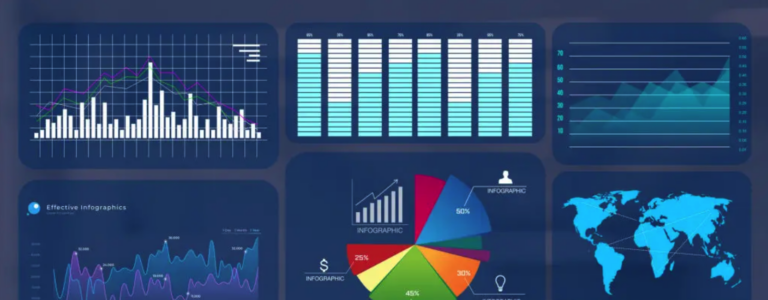Key Components of an Effective CTO Dashboard

For Chief Technology Officers (CTOs), an effective dashboard provides a comprehensive view of the key metrics that define the organization’s technology health and performance. A well-constructed CTO dashboard aligns technology objectives with business goals, offering valuable insights that support decision-making and facilitate strategic planning. This guide outlines the critical components of a CTO dashboard, focusing on how to best track and interpret each metric for optimal oversight and impact.
Table of Contents
- Why a CTO Dashboard is Essential
- Key Components of an Effective CTO Dashboard
- Technology and Infrastructure Health
- Product Development Metrics
- Security and Compliance
- Financial Metrics and Budgeting
- Team Performance and Productivity
- Customer Experience and Satisfaction
- Innovation and R&D
- Best Practices for Creating a CTO Dashboard
- Conclusion
1. Why a CTO Dashboard is Essential
For a CTO, the ability to view real-time and aggregated data on technology performance is essential for strategic leadership. A well-designed CTO dashboard provides:
- Instant Insights into technology health and progress.
- Improved Decision-Making by highlighting trends, bottlenecks, and growth opportunities.
- Alignment with Business Goals by integrating tech metrics with company-wide objectives.
- Enhanced Communication with other executives, giving them a clear, data-driven view of the tech landscape.
2. Key Components of an Effective CTO Dashboard
An effective CTO dashboard is structured around key areas that provide insight into technology operations and align with business priorities. Here are the core components:
Technology and Infrastructure Health
Why It Matters: Infrastructure reliability is the foundation of any technology-dependent organization. Monitoring its health ensures operational continuity and helps prevent costly downtimes.
Key Metrics:
- System Uptime: Tracks the availability of core systems, showing the reliability of infrastructure.
- Incident Response Time: Measures the speed of resolving technical incidents, impacting service quality.
- Latency and Load Times: Provides insights into system performance and user experience.
- Capacity Utilization: Monitors resource usage to avoid overloading or under-utilization of infrastructure.
Product Development Metrics
Why It Matters: For CTOs overseeing product development, these metrics offer a view into the efficiency and effectiveness of engineering and product teams.
Key Metrics:
- Feature Delivery Velocity: Tracks how quickly the team delivers new features, critical for agile environments.
- Deployment Frequency: Measures how often new code is deployed, indicating the team’s agility.
- Defect Rate: Assesses the quality of code released, helping improve product reliability.
- Cycle Time: Monitors the time taken from ideation to deployment, identifying potential process bottlenecks.
Security and Compliance
Why It Matters: Security and compliance are top priorities, given the risks associated with data breaches and regulatory penalties.
Key Metrics:
- Vulnerability Detection Rate: Tracks the number of detected vulnerabilities and the speed of resolution.
- Compliance Adherence: Ensures that technology operations are aligned with industry regulations (e.g., GDPR, HIPAA).
- Incident Response Time: Measures the time taken to address security breaches or potential threats.
- Access Control Logs: Tracks unusual access activity, helping to prevent unauthorized data access.
Financial Metrics and Budgeting
Why It Matters: Financial oversight is critical, as technology initiatives often represent significant investments. Monitoring costs in real-time helps prevent budget overruns.
Key Metrics:
- Tech Spend Against Budget: Tracks spending on technology infrastructure, product development, and staffing.
- Cost per Feature: Measures the cost associated with developing and implementing new features.
- Return on Investment (ROI) for Projects: Evaluates the financial impact of technology projects relative to their cost.
- Cloud Spending: Monitors cloud service costs, which are a significant and growing expense for many companies.
Team Performance and Productivity
Why It Matters: CTOs benefit from understanding team productivity and morale to optimize resource allocation and improve outcomes.
Key Metrics:
- Employee Satisfaction Score: Surveys or sentiment analysis indicating team morale.
- Resource Allocation: Tracks workload distribution to identify over- or underutilized resources.
- Task Completion Rate: Measures the percentage of assigned tasks completed on time.
- Turnover Rate: Monitors employee turnover, as high rates may indicate morale or cultural issues.
Customer Experience and Satisfaction
Why It Matters: Customer satisfaction is a vital indicator of the success of technology initiatives, especially in product-driven companies.
Key Metrics:
- Net Promoter Score (NPS): Gauges customer loyalty and satisfaction with the product or service.
- Customer Support Tickets: Monitors the volume and type of customer issues to identify common pain points.
- Product Downtime Impact on Customers: Tracks downtime frequency and duration, providing insight into how outages affect customers.
- Feature Adoption Rate: Shows how customers are interacting with new features, indicating product value.
Innovation and R&D
Why It Matters: Innovation metrics help CTOs assess how effectively their organization is adapting and innovating to maintain a competitive edge.
Key Metrics:
- R&D Investment as a Percentage of Revenue: Tracks investment in research and development relative to revenue.
- Time to Market for New Features: Measures how quickly the company moves from concept to launch.
- Patent Activity or New Technology Implementations: Provides insights into the organization’s intellectual property growth and innovation rate.
- Internal Innovation Metrics: May include idea submissions, hackathon participation, or similar initiatives to gauge team engagement in innovation.
3. Best Practices for Creating a CTO Dashboard
Creating an impactful CTO dashboard requires thoughtful design and consideration of which metrics matter most. Here are some best practices:
- Prioritize Actionable Metrics: Focus on metrics that can drive decision-making and directly impact business and technology outcomes.
- Ensure Real-Time Data Access: Real-time or near-real-time data enables CTOs to respond quickly to emerging issues.
- Customize Views by Stakeholder Needs: Make sure the dashboard is flexible enough to generate high-level views for executives while offering more detailed analytics for tech teams.
- Visualize for Readability: Use charts, graphs, and color coding to present data in an easily digestible format.
- Regularly Update and Refine Metrics: Reassess and adjust metrics periodically to ensure the dashboard aligns with evolving business goals and technological landscapes.
4. Conclusion
An effective CTO dashboard goes beyond just data collection; it’s a powerful tool for strategic decision-making and operational oversight. By focusing on key areas like infrastructure health, security, product development, and customer satisfaction, CTOs gain a holistic view of their technology environment and its alignment with business goals. A well-structured dashboard not only empowers the CTO to make informed decisions but also enhances collaboration with other executives, fosters accountability, and drives continuous improvement across the organization.







